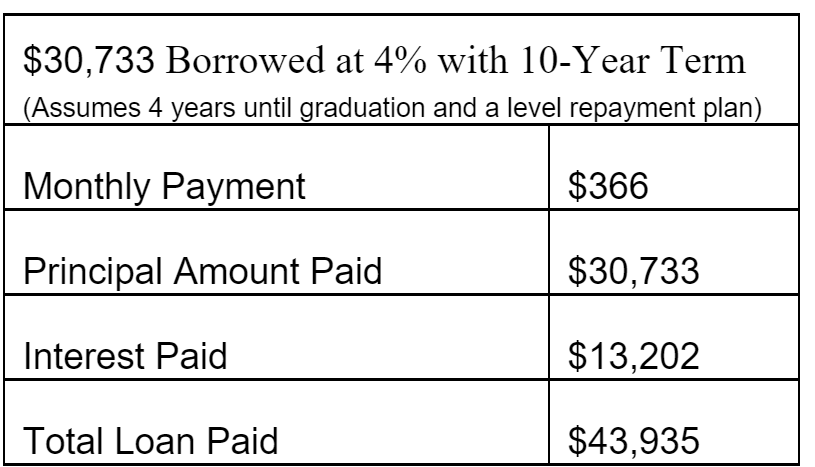By Mary Nickeson, Senior Vice President, Invite Education
Reprinted from September 2022
Most families use a combination of sources to pay for higher education, including savings, current income, and financial aid. Financial aid can help you cover a portion of education costs. Still, for many families, much of the aid received by the student is not in the form of scholarships and grants—money that doesn’t need to be paid back, but rather is in the form of loans—money that does need to be paid back with interest. Further, current income is spread across myriad needs and priorities for most families, often leaving modest amounts to put toward costs. Using both savings and loans to pay for a large portion of education costs is a very common scenario.
It’s less expensive to save than to borrow
When it comes to paying for higher education, the adage “saving a dollar today is better than borrowing one tomorrow” applies. Often both parents and students borrow for this important life goal. In both cases, borrowing becomes a much more costly endeavor long term. Savings in advance is the more attractive option. Even small amounts of savings weekly or monthly add up, and compounding interest can work to increase your savings with the benefit of time. Conversely, over time, incurring interest on a loan can significantly increase your debt.
Compare the numbers
Consider that saving $100 per month averaging a 4% rate of return compounded annually over 18 years would produce an estimated $30,773, including $21,600 in contributions and approximately $9,133 in earned interest.
The following table* provides a breakdown displaying the potential financial impact of borrowing $30,773 at 4% under a 10-year repayment plan instead of saving in advance. The total out-of-pocket cost with the borrowing option is approximately $43,935, more than twice the total contributions in the savings scenario. The cost of borrowing would be even higher if the repayment term were longer or the interest rate was higher. And while borrowers may be able to deduct part of their loan payments, borrowing is still the more expensive option.

As you can see, minimizing borrowing by saving in advance makes financial sense. And for students, doing so can be crucial in freeing up income after graduation for other life goals such as saving for retirement or buying a new home.
Three tips to help minimize student loans
- Save early and regularly.
Start saving and investing as early as possible to give yourself a longer time to meet your education funding goals. Save automatically through automatic transfers or payroll deductions to make it routine and easier to set aside money on a regular basis. You don’t need to save 100% of future costs. Just get started as soon as you can.
- Look for ways to increase your savings.
In years where you may have a bonus, a raise, or an income tax refund, for example, you may be able to put a little extra toward education costs. Minor lifestyle changes may help you find a bit extra per month to put toward college, such as eating out less frequently. Ask friends and family to participate as well.
- Take advantage of 529 plans.
529 plans offer many benefits, among them the tremendous benefit of tax-free growth. Earnings grow free from federal taxes and typically from state taxes when withdrawals are used for qualified expenses.
529 plan funds may be used nationwide for federally accredited apprenticeships, trade schools, community colleges, certificate programs, four-year colleges, graduate school, and more. To learn about additional benefits and to research your state’s 529 plan, visit collegesavings.org.
About the author:
Mary Nickeson is the Senior Vice President at Invite Education. Invite Education provides customized calculators and decision-support tools to help families, employees, and advisors make college-funding decisions with confidence.
*Calculations in this article are for general educational purposes only and may not apply to your circumstances. Loan calculations assume interest accrues on the principal while student is in school plus a six-month grace period.
